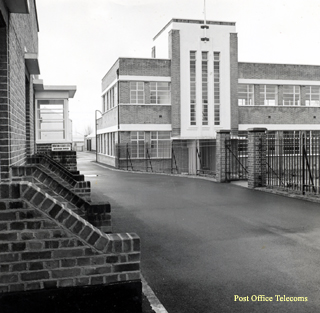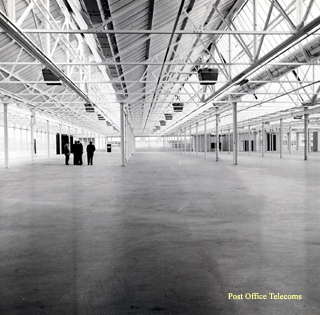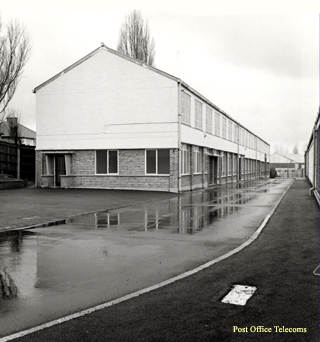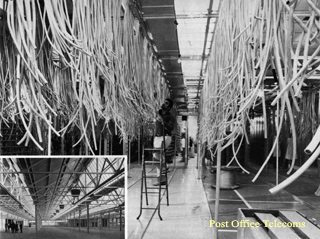John Burt recalls how his team came to choose Stag Lane as a major international switching centre...
"After working on Critical Path Analysis (CPA) in the LTR, and then I/C commissioning the London Schools CCTV network of over 1500 schools and colleges, I was promoted to a Senior Executive Engineer (level 3) post in the then International & Maritime Telecom Region. The International service was in a terrible mess, as the introduction of submarine cables and satellites, giving high quality connections to all parts of the world, had led to a huge growth in demand. All we had to serve this was the small unit in Faraday, and a slightly larger unit in Wood Street, London. Even there the required equipment growth was hardly being met by Messrs Plessey, the only contractor making this type of equipment for us at that time."
Mondial House
Messrs Plessey were also manufacturing equipment that was to be installed in a new building, Mondial House, that was being built on the edge of the River Thames near Cannon Street Railway Station. This building was in great delay due to a number of reasons:
|
The New Contract
Whilst this was going on, it had already been decided that this new unit when installed simply would not cope with the anticipated traffic, and it was agreed at Government level that we could go out to international tender for another international exchange. This we did, and I was on this project under my Deputy Controller a Mr Rowland Button, a very able and loyal guv'nor who is still a great friend.Well in brief, Messrs Ericsson got the contract, (another interesting story), so we had two exchanges coming along and no where to put them.
Hunt ends at Stag Lane
It had been decided at Board level that a building had to be found in which to install these two exchanges, so I was given the task to find one, with Pat Hastings from the engineering accommodation group, and an executive officer from the staff group, off we went together with the official estate agent looking at property.
We were shown mainly derelict factories, and I do mean derelict. The old Mazawattee Tea Factory in Bermondsey, The old Waygood Otis lift factory in Southwark, and it was when we were surrounded by a scene of devastation at the Morphy Richards Factory at Orpington, we rounded on the estate agent and said that if was the best he could offer we might as well pack up and go home.
It was then he said, "Well, there is a place in North London that might suit"; so that is how we found Stag Lane.
Photographs
The developer had the sense to refurbish the buildings, and keep them cleaned and heated; the toilets all worked. After an initial site inspection by the Board, approval was quickly given, and a working party consisting of the Heads of Group soon visited the site and detailed planning began.
The De Havilland unit went into one of the large buildings, and the Mollison unit went into the other.
After arranging four months training for the area and my staff, in which I was unable to participate due to severe heart problems, I left the Project and ultimately returned after heart surgery to become Head of Planning & International Transmission Standards, but that too is another story...
John Burt
Read about John Burt's earlier work...
Postscript
Peter Walker Recalls
Some further reminiscences of Mollison: As the photos show, the single storey building was huge. Until then, most large trunk and international exchanges were built on several floors of a building. Seeing an exchange spread out on a single floor was awesome. The front building at Stag Lane had the Mollison Units, divided into one area for the I/C unit and another for the O/G, with the ISMC/ITMC alongside. Behind that building was the BACS building and beyond that was the De Havilland and TRS (Trunk Repeater Station) building. The training school ran down the left hand side.
Simon Eden (Feb 1976) writes ...
Thirty five sites were looked at before March 1972. The concrete floor on which the switching equipment stands was nowhere near strong enough. It was only three inches think and had little or no reinforcement and gaps underneath where old floorboards had rotted. Leaks in the roof - more than a quarter of it had to be re-sheeted.
References
POTJ Spring 1974 "Hunt ends at Stag Lane" by R.W. Button.
With special thanks to John Burt and Peter Walker.
All logos and trade marks are the property of their respective owners and are used on the Light Straw site(s) for review only. Students and researchers are recommended to make their own independent enquiries as to the accuracy of the information contained therein.




